Insects
These are some of the insects you may encounter in your garden and elsewhere.
-
Beneficial Insects
Beneficial insects are those that are helpful in some way, either as predators or pollinators. A number of beneficial insects occur naturally. Learn to identify and incorporate them in maintaining your garden.
Many predator species are the natural enemies of insects we consider pests. Natural enemies are an important component of integrated pest management programs.

Lady beetles
Both the adults and larvae prey on aphids, scale insects, mealybugs, and other soft-bodied insect pests. Adults are oval and orange or reddish with black markings.
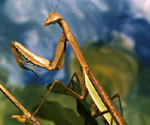
Praying mantids
Adults are usually more than two inches long and either brown or green in color. They ambush their prey by waiting among the foliage. Their front legs are modified for grasping and holding their prey.
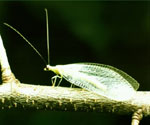
Lacewings
These common insects can be found on grass, weeds, and shrubs. They are green with copper-colored eyes and are about ¾ inch in length. The larvae feed primarily on aphids.
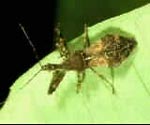
Assassin bugs
These insects are generally brown or black, but can also be brightly colored with an elongated head and short, curved beak. They are usually found on foliage where they attack harmful insects, including caterpillars.

Spiders
All spiders are predators, feeding almost exclusively on a wide variety of insects, paralyzing their prey with venom injected by their bites. Spiders that do not construct webs are especially effective in capturing insects that inhabit the soil surface or plant foliage.

Ground beetles
Both the adults and larvae are predaceous upon pest insects. Usually found on the ground, they are active at night, feeding on mole crickets and earwigs. Adults can be about an inch long, black in color, but sometimes metallic.
-
Pollinators
These are drawn to the bright colors of flowers where they feed on nectar. As they feed, they transfer pollen from flower to flower, promoting plant reproduction. Pollinator insects often have furry bodies that allow them to pick up a lot of pollen.
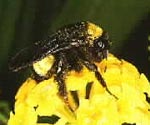
Bumblebees
Larger than honeybees, these stout, fuzzy bees come in variations of yellow, orange, and black. They are especially good at getting inside tightly closed flowers that have special pollination triggers only bumblebees can trip.
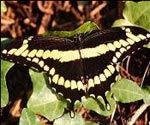
Giant swallowtail
At four to five inches across, this is one of the Southeast's largest butterflies. It is mostly black and yellow with tail-like projections from the hindwings.

Monarch butterflies
Monarchs use milkweed plants as their larval food, retaining the poisons as adults. The similar-looking viceroy butterfly occurs wherever willow trees are available for caterpillar food.

Long-tailed skipper
These butterflies are dull brown flecked with yellow or white and have long, thick tails on their hindwings. One species has iridescent blue-green patches at the base of the wings. Their larval food includes weedy beans and cultivated beans.

Sphinx moth
Also known as hawkmoths, they usually fly between dusk and dawn and dart between flowers using their long proboscis to probe nectar from long, floral tubes. Their streamlined bodies taper to a point on the abdomen and have long narrow wings. Their larval foods include tomato and tobacco but you can find them feeding on honeysuckle and jasmine.
-
Pests
Florida's warm and humid climate creates a breeding ground for many pest insects. Although annoying, they provide food for other insects and animals. Be sure to use the least toxic method of pest management when dealing with them.
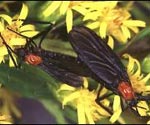
Love bugs
Although not native to the Southeast, these insects swarm the roadways twice a year, usually in May and September. Both sexes of the small black and red insects sit, crawl, and fly attached end-to-end during the prolonged mating process.
Least toxic control: Bugs should be washed off cars as soon as possible to prevent paint damage.
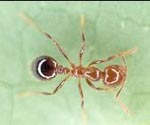
Fire ants
Many Southeastern states host the imported fire ant that came from South America. Their irregular sandy mounds can be up to three feet across and two feet high. Fire ants are aggressive defenders so treat them with caution!
Least toxic control: No control method permanently eliminates fire ants. Non-chemical controls include pouring hot water or a water and soap solution over mounds, but this has limited effect. Chemical controls include baits found in stores.

Termites
These soft-bodied insects live in colonies that house hundreds to thousands of individuals hidden in tunnels and burrows inside wood or in the soil beneath rotting wood. Termites chew and swallow wood but cannot digest it. Instead, microscopic organisms in their guts break down the wood into basic nutrients the termites can absorb.
Least toxic control: Above-ground or in-ground baits. Baiting is a hit-or-miss process because the termites must find the baits themselves. If problems persist, contact a termite control specialist.
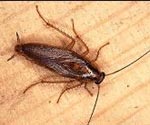
Cockroaches
Of the many species that are found in the Southeast, most cockroaches normally occur outdoors, often in leaf litter or decaying wood. Most roaches are scavengers, feeding on sugary and starchy foods indoors and decaying plant matter outdoors.
Least toxic control: boric acid powder or roach tablets, but do not put these out where pets or children could come into contact
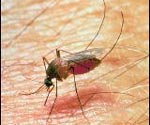
Mosquitoes
The Southeast hosts many species of mosquitoes. There are 69 species of mosquitoes in Florida alone. Hatching from tiny eggs laid in standing water, only the females suck blood in order to produce eggs. They fly most often when the air is moist because hot air dries out their small bodies. Fortunately many animals eat mosquitoes, including birds, spiders, and fish.
Least toxic control: Prevention begins with sanitation and elimination of breeding sites. Clean debris from rain gutters, eliminate standing water, and clean out birdbaths and pet dishes often.



